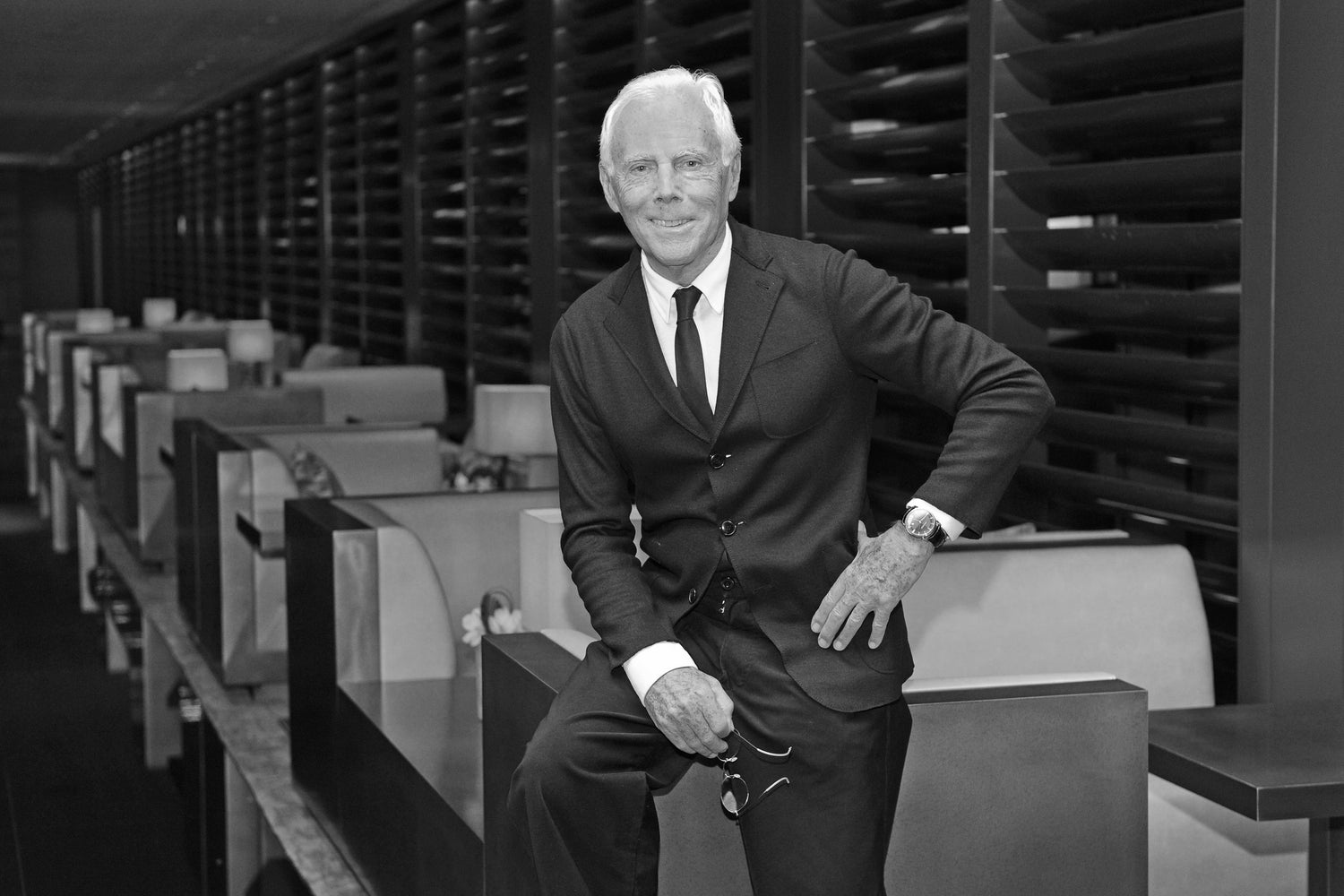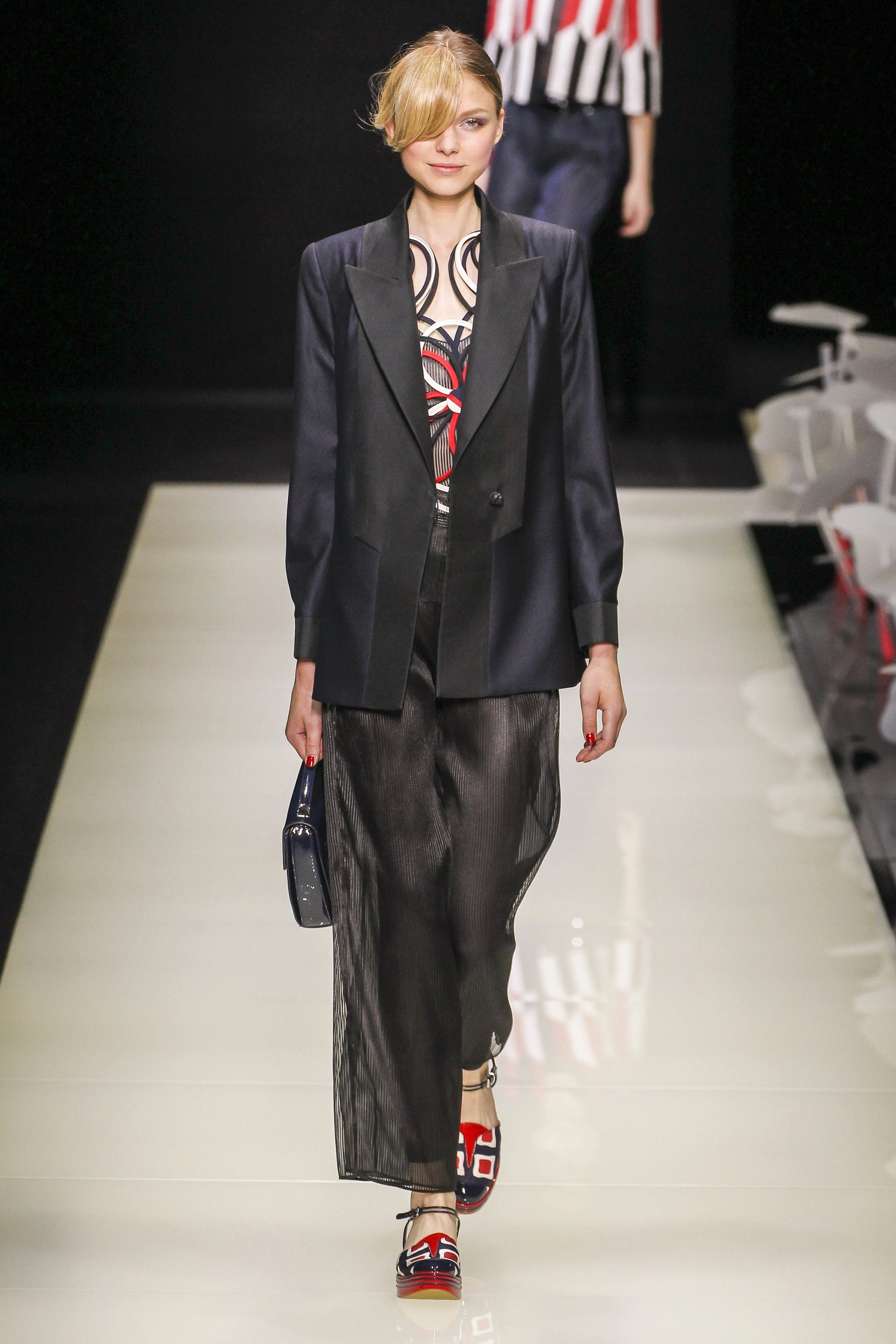THE KING IS DEAD
The news broke an hour ago, on this September 4th, 2025. Mr. Giorgio Armani has passed away in Milan, surrounded by his loved ones.
In the world of fashion, he is known as Re Giorgio. And rightly so. Half a century of research, discipline, and inspired intuition devoted to style, elegance, and the pursuit of timelessness.

Italy — Milan — November 21, 2016 — Giorgio Armani poses during Fashion Week — Image by andreadelbo
My own passion for fashion was nourished by the work of Giorgio Armani. It was my older sister Sofia, seven years my senior, who sat me down one afternoon in front of the television.
“You’ll see, it’s sublime.” Fashion TV (F, for those who remember) was broadcasting Armani’s women’s show. I was ten years old. And it was sublime.
Sofia pointed out how everything in his work rested on fluidity. She was right—the silhouettes seemed almost liquid, so perfectly cut, the body liberated, the fabrics of exquisite quality. Beautiful, light, effortless.
Years later, in my readings, I came across the Japanese concept of Ma: the interval, the distance, the space between two entities. It is this pursuit of “space” that creates harmony within a composition. In music, it is the silence that gives rhythm. In architecture, it is the arrangement of rooms and furniture. In floral art, it is the way each flower’s form is allowed to breathe. And in fashion, it is the circulation of air between fabric and body.
While the influence of the 1930s is unmistakably present in Giorgio Armani’s silhouettes—and certainly contributes to their fluidity—it is clear that Re Giorgio had made Ma his path.
In the early 1980s, Giorgio Armani revolutionized menswear with the introduction of the so-called “deconstructed” jacket to ready-to-wear. He removed padding and unnecessary linings, opting instead for a soft shoulder in the purest Neapolitan tradition. The result was jackets crafted from lightweight wool fabrics of incomparable finesse, liberating men from the rigid constraints of boxy, often ill-fitting suits.

Milan, Italy — September 28: Model walks the runway during the Giorgio Armani Spring/Summer 2016 show at Milan Fashion Week — Image by fashionstock
A friend of mine once met Mr. Armani while working on a feature about the designer’s Milanese residence. He described an interior of striking asceticism, perfectly mirroring its owner: focused, restrained, sparing with words. His account did not surprise me. Armani once said, “The rule of luxury is not to add, but to take away.” (La legge del lusso non è aggiungere, ma togliere).
I have always been wary of the superfluous.
As a little girl, I asked my mother to remove the frill from my ballet leotard.
“But it’s pretty!”
“No, Mom, it’s useless. It ruins everything!”
“I don’t understand.”
“The silhouette, Mom! The movement! That frill is just there to make it girly. I don’t like it.”
“Always black! Next year, can’t you pick pink instead?”*
I rolled my eyes. My dance teacher did the same every September.
Often, the things we add when there is no need are nothing but disguises. Or worse, obstacles to women’s freedom of movement.
The fluidity that defined Armani’s work did not stop at fabric or cut; it extended to gender itself. If Yves Saint Laurent is remembered, among other things, for giving women the tuxedo, Giorgio Armani brought countless sartorial codes once reserved for men into his women’s collections.

Milan, Italy — September 25: Giorgio Armani walks the runway during the Emporio Armani Spring/Summer 2016 show at Milan Fashion Week on September 25, 2015 — Image by fashionstock
Shedding the superfluous is a lifelong quest. A discipline that is demanding, obsessive. A kind of neurosis that deepens with each stage of one’s work and eventually permeates everything: your relationships, your home—especially the kitchen and bathroom—your handwriting, the way you place your voice, your wardrobe, your physical practice, your diet, even your availability.
This is perhaps why Mr. Armani seemed so distant to my friend. To strip away the superfluous is to reach for what is, and what will always be. Re Giorgio once said: “Dress in such a way that, when you look at a photo of yourself, you cannot assign it a date.” (Vestiti in modo che, quando vedi una tua foto, non sia in grado di attribuirle una data).
I have witnessed firsthand the meticulous work required in the pursuit of timelessness. It is with no small sense of pride that we now collaborate with three Italian workshops that earned their stripes through close partnerships with the Armani house.
The workshop entrusted with our upcoming knitwear collection is led by an extraordinary woman. At eighteen, she lost her mother and suddenly inherited the directorship of the knitwear atelier. She faced two choices: dismiss forty women, each thirty to forty years her senior, or grit her teeth, endure the mockery, and learn. She was fortunate enough to count Giorgio Armani himself as both mentor and client.
His past collections still hold the largest place in her archives, alongside marvels imagined by Karl Lagerfeld for Chanel—one piece in particular left me awestruck, not only for its beauty but for its complexity, proof of how endless the possibilities of knitwear can be. It was so fine it looked almost like lace. Other great maisons are also represented in her archives.
At our very first meeting, the director explained how their patternmaking department works daily on the cuts of what they call “essential” pieces.
It’s what looks the simplest that is, in fact, the most complicated—because everything, absolutely everything, matters. And in knitwear, the quality of the work is revealed on the reverse side of the piece. Do you understand?”
Yes, we understood. It became clear to us, then, that this was the atelier we would entrust with our work.

A quality piece that aspires to timelessness has had every one of its components refined in detail until, in the end, nothing is visible—and it is precisely this invisibility that makes its elegance shine so clearly.
It reminded me of a friend who works as a maître d’ in a fine dining restaurant. Training in this métier is extremely demanding, service is highly codified, and yet, in the end, it must disappear.
“When the guest leaves without realizing they’ve been served, that’s when I’ve done my job well—and they will carry a beautiful memory with them.”
Giorgio Armani once said: “Elegance is not about being noticed, but about being remembered.” (L’eleganza non è farsi notare, ma farsi ricordare).
Each season, there was one show I never missed: Mr. Armani’s. What comes next? At the last show, it was Leo Dell’Orco—his partner and the head of menswear design—who took the final bow.
The king is dead. Long live the king?
*Dancewear sold in Casablanca in the 1990s was only available in two colors: black and a dreadful pale pink.
